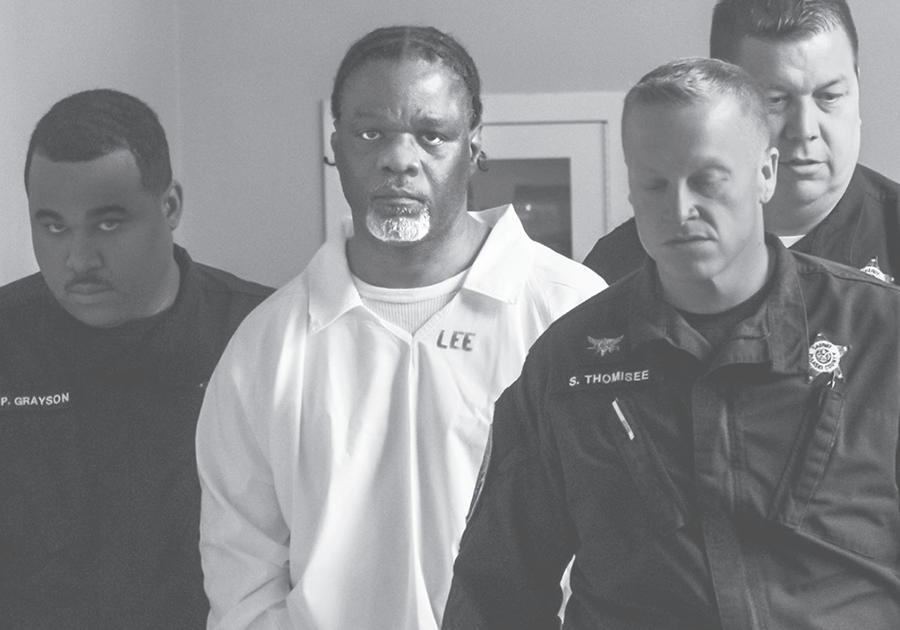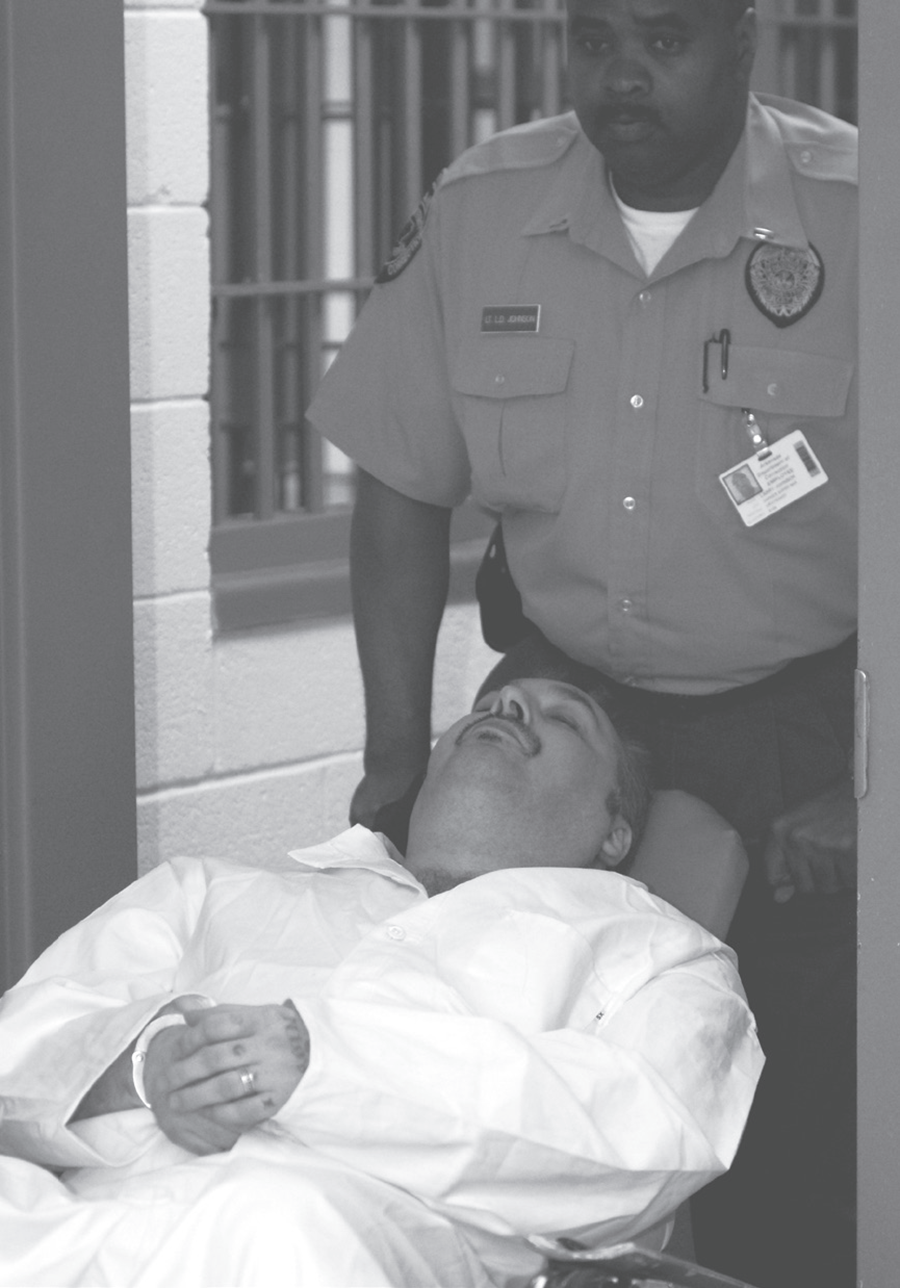In April 2017, with its supply of lethal injection drugs about to expire and with thirty-two inmates still on its death row,1 the state of Arkansas announced that it would perform eight executions over an eleven-day period. Though legal problems ultimately halted half of them, four were carried out as originally planned. They were all conducted with a cocktail of lethal drugs that Arkansas had never before employed.
Before this execution spree, Arkansas’s last execution had been in 2005. For that execution, the state used the well-established, “traditional” three-drug lethal injection cocktail: sodium thiopental, pancuronium bromide, and potassium chloride. But the state failed to replenish its supply of those three drugs in the years that followed, and, in 2013, when Arkansas tried to buy more, it found those drugs were no longer available. This led the state to devise a new drug protocol. The protocol it came up with, however, which called for the use of lorazepam and phenobarbital,2 was quickly criticized. Critics noted that not only had those drugs never before been used in an execution, they were also unlikely to cause death quickly, if at all.3 By 2015, the state was forced to retreat, deciding this time to adopt another three-drug cocktail that was actively being used by other states: a sedative named midazolam was to be injected at the start of the execution, followed by two other drugs—vecuronium bromide and potassium chloride.4
Despite Arkansas’s efforts to find what it hoped would be an effective drug cocktail for lethal injections, the executions it conducted in 2017 had deeply troubling results. In many ways, the story of what happened when Arkansas went ahead with this new drug cocktail tells, in condensed form, the story of lethal injection’s recent history in the United States. Once touted as a technological miracle that would ensure executions would be safe, reliable, and humane, since 2010 efforts by states across the country to use lethal injection for execution have, as this book describes, been beset by one problem after another. These repeated problems, mishaps, and failures, like the ones that occurred in Arkansas, show the hollowness of that hope and call into question the viability of America’s continuing attachment to the death penalty. Despite these long-standing problems with lethal injection, over the last decade death penalty states including Arkansas have clung fast to this method of execution, rather than abandoning it. They have revised and repaired it as best they could to keep the machinery of death running, even as new problems emerged with each revision and repair.
The four executions that Arkansas went ahead with in 2017 were carried out during a single week in mid-April. Its first execution, and its first ever using the drug midazolam, was that of Ledell Lee. Lee had been sentenced to death for the 1993 rape and murder of his twenty-six-year-old neighbor, Debra Reese. He had been tried twice. During his first trial, several people testified in support of Lee’s alibi. That trial had ended in a hung jury. At his second trial, however, the defense inexplicably called no alibi witnesses. This time, the jury found Lee guilty and sentenced him to death.5
Several civil rights organizations tried to stop the execution, contending that insufficient efforts had been made to avoid the possibility of convicting an innocent man. On the eve of Lee’s execution, the Innocence Project—an organization which works to overturn wrongful convictions—and the American Civil Liberties Union (ACLU) brought a last-minute appeal to the Arkansas Supreme Court, specifically noting that DNA evidence from the crime scene had never been tested with the most modern technology. The court, however, refused to stay Lee’s execution, arguing that this last-minute appeal came too close to the scheduled execution date. The execution proceeded on April 20, ten days before Arkansas’s batch of new lethal injection drugs would expire.

Lee’s execution, which appeared to state officials to cause less pain and suffering for him than they had feared it would, led the state to believe it had found a drug cocktail that would be reliably both lethal and pain-free. After placing intravenous lines (IVs) in Lee’s arms, the execution team started the flow of the sedative midazolam at 11:44 p.m.6 As it entered his body, Lee’s eyes slowly shut and he began to swallow repeatedly, an effect that commonly occurs when midazolam is used in an execution. Once it had been administered, the execution team began the flow of vecuronium bromide and potassium chloride. The coroner pronounced him dead twelve minutes after the execution began.
Although many problems had been documented when midazolam was used in executions in other states, officials contended that Lee’s execution had gone off without a problem.7 Four days later, Arkansas went ahead with its plan to kill a second man—a man named Jack Jones. Jones’s execution, however, like two other executions that week, revealed the unpredictability of lethal injection.
In 1996, Jack Jones was sentenced to death for murdering a woman named Mary Phillips. On a June night in 1995, Jones broke into an accountant’s office in Bald Knob, Arkansas. There, he found Mary Phillips and her eleven-year-old daughter, Lacy. After attempting to rob Mary, Jones bound her to a chair, raped her, and strangled her with a cord. Jones then assaulted Lacy, strangling her and crushing her skull.8
When investigators arrived, they found Lacy in a closet tied to an office chair.9 Miraculously, she survived and was able to testify at her assailant’s trial. There was little doubt about Jones’s guilt. When the police first questioned him, he waived his Miranda rights and confessed to the crime.10
As a child, Jones had been subject to physical abuse by his father, who regularly beat him, and had also suffered “sexual abuse at the hands of three strangers who abducted and raped him.”11 By 1994, Jones was a suicidal thirty-year-old with bipolar disorder, depression, and ADHD. But during his sentencing, the jury found that aggravating factors, including the cruelty of his crime and a previous criminal record, outweighed mitigating factors like his troubled childhood. They sentenced him to death.
A little more than two decades after his conviction, guards steered the wheelchair-bound Jack Jones into Arkansas’s death chamber.12 When the witnesses arrived at 7:00 p.m., Jones was already strapped to a gurney with intravenous lines sticking out of his arms. At 7:06 p.m., the warden wiped a hand over his face, signaling the execution’s start.13

Throughout the fourteen-minute execution, correctional staff checked Jones’s consciousness by sticking a tongue depressor in his mouth, “lifting his eyelids and rubbing his sternum.”14 According to Jones’s lawyer, his client began to gasp and gulp for air four minutes into the execution—a sign that he was experiencing physical pain. He added that Jones’s mouth moved like a “fish . . . chomping on bait.”15 Soon, that movement slowed, and the team declared Jones dead at 7:20 p.m.
Lawyers for Marcel Williams, whose execution was scheduled for later that night, and state officials offered different interpretations of Jones’s mouth movements. Williams’s lawyers called his death “torturous,” contending that Jones “was moving his lips and gulping for air [which is] evidence that the [midazolam] did not properly sedate him.”16 A Department of Corrections spokesperson disagreed, however, stating that, “the inmate was apologizing to the department director, Wendy Kelley, and thanking her for the way she treated him.”17 As part of Arkansas’s standard procedure, before the lethal drugs started to flow, the prison staff shut off the death chamber microphone,18 so it is not possible to resolve which of these interpretations is more accurate.
But whether or not Jones had been dying a painful and prolonged death, was gasping for breath, or was “thanking the department director,” there were other problems prior to the execution itself, including officials’ error-ridden attempts to place an IV in Jones’s veins. Although Arkansas claimed in a final report that it only took eight minutes to place Jones’s IV, Williams’s attorneys said it actually took forty-five minutes to find a suitable vein.19 Moreover, as is often the case when such difficulties occur, the official’s report did not mention the many failed attempts to find such a vein. Yet the autopsy report noted that medical examiners “found five needle marks on Jones’s neck and clavicle . . . area” and that the needle marks had been covered up with makeup.20
Botched lethal injections, like Jones’s, are a continuing and problematic part of the story of capital punishment in the United States.21 From the beginning of the republic, execution practices have been designed to differentiate law’s violence from violence outside the law—to sharply set capital punishment apart from the crimes the law condemns. This country has sought ways of killing that would neither allow the condemned to become an object of pity nor to appropriate the status of the victim. Lethal injection was once thought to represent the fulfillment of this distinctly American quest.
1. This figure was found by taking information from the Death Penalty Information Center about Arkansas’s current death row population, subtracting the number of people sentenced since 2017, and adding the number of people executed in 2017. See https://deathpenaltyinfo.org/.
2. “Lethal Injection Procedure (Attachment C)” (Arkansas Department of Corrections, April 11, 2013).
3. Jeannie Nuss, “Arkansas Turns to Different Lethal Injection Drug,” AP News, April 19, 2013, sec. Prisons, https://apnews.com/article/2dc13f1b27904f18ae322a587c21db99.
4. “Lethal Injection Procedure (Attachment C)” (Arkansas Department of Corrections, August 6, 2015).
5. Ed Pilkington, “‘The New Evidence Raises Deeply Troubling Questions’: Did Arkansas Kill an Innocent Man?,” The Guardian, January 23, 2020, http://www.theguardian.com/us-news/2020/jan/23/arkansas-death-penalty-ledell-lee-execution.
6. Eric Besson, John Moritz, and Aziza Musa, “State Carries out 1 Execution,” Arkansas Democrat-Gazette, April 21, 2017.
7. Previous midazolam executions had been botched and riddled with mishaps. “Witnessing Death: AP Reporters Describe Problem Executions,” AP News, April 29, 2017, https://apnews.com/article/bd583ccb99544d9cbe45a60f0afeed55.
8. Ibid.; Eric Besson, Lisa Hammersly, and John Moritz, “2 Killers Executed Hours Apart,” Arkansas Democrat-Gazette, April 25, 2017.
9. Rolly Hoyt, “Lawmen Recall Jack Jones’ Chilling Murder, Rape of Mary Phillips,” THV 11, 2017, https://www.thv11.com/article/news/local/lawmen-recall-jack-jones-chilling-murder-rape-of-mary-phillips/91–433258301.
10. Jones v. State, 329 Ark. 62 (1997).
11. Lindsey Millar, “The Jack Jones, Marcel Williams Execution Thread,” Arkansas Times, April 24, 2017.
12. He developed diabetes in prison and had a leg amputated.
13. Andrew DeMillo and Kelly P. Kissel, “Arkansas Executes Jones,” West Hawaii Today, April 25, 2017, https://www.westhawaiitoday.com/2017/04/25/nation-world-news/arkansas-executes-jones-plans-2nd-lethal-injection-of-night/.
14. Ed Pilkington, Jamiles Lartey, and Jacob Rosenberg, “Arkansas Carries out First Double Execution in the US for 16 Years,” The Guardian, April 25, 2017.
15. Besson, Hammersly, and Moritz, “2 Killers Executed Hours Apart.”
16. Ibid.
17. Andrew DeMillo and Kelly P. Kissel, “Contrasting Accounts of Arkansas Execution from Witnesses,” AP News, April 25, 2017.
18. Kelly P. Kissel, “New Issue in Executions: Should the Death Chamber Be Silent?” Associated Press, April 25, 2017.
19. DeMillo and Kissel, “Contrasting Accounts of Arkansas Execution from Witnesses.”
20. John Moritz, “4 Arkansas Inmates Died of Injection, Recently Completed Reports Show,” Arkansas Democrat-Gazette, June 8, 2017.
21. Austin Sarat et al., Gruesome Spectacles: Botched Executions and America’s Death Penalty (Stanford, CA: Stanford University Press, 2014).